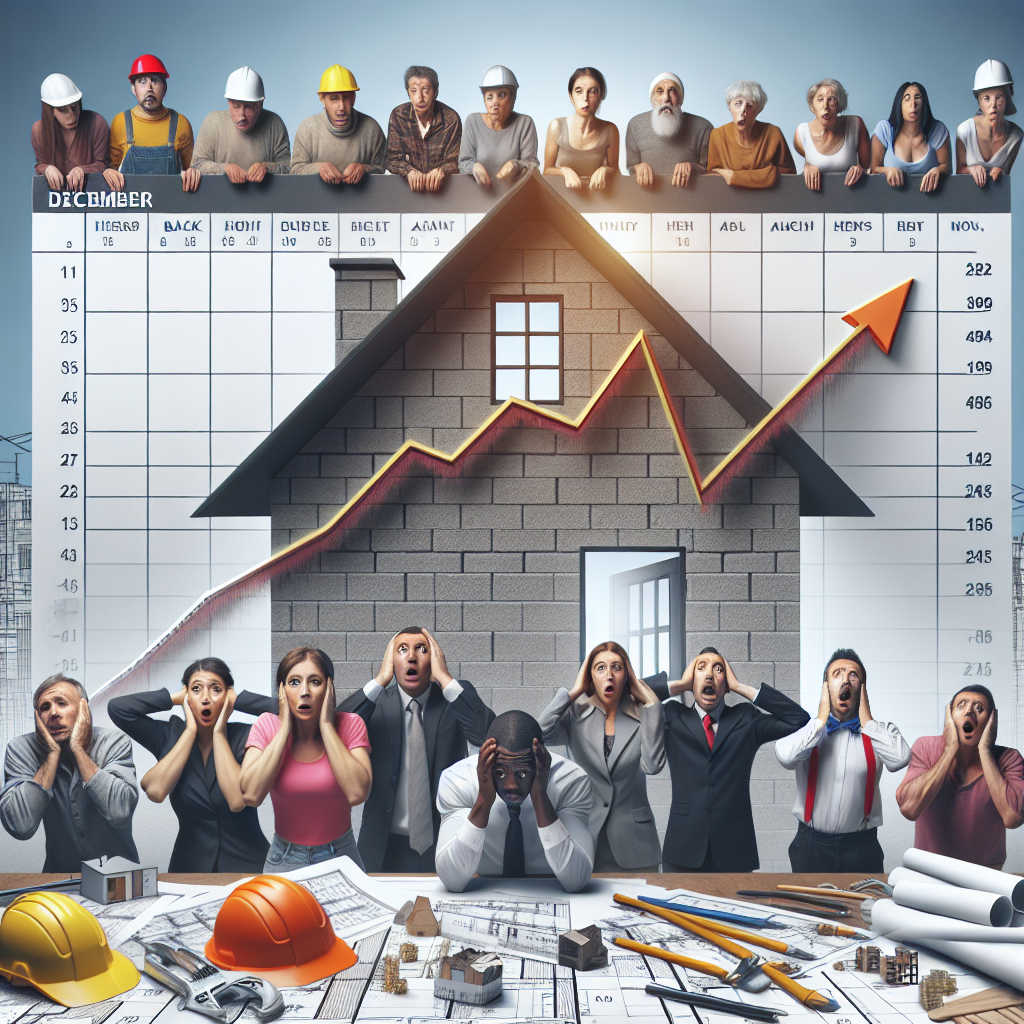Homebuilder Confidence Stagnates in December, Ending Growth Streak
In December, the homebuilding industry faced a significant shift as the confidence of homebuilders plateaued, marking the end of a prolonged period of growth. This stagnation in confidence is a critical indicator of the challenges and uncertainties currently facing the housing market. Understanding the factors contributing to this stagnation is essential for stakeholders, including builders, investors, and policymakers, to navigate the evolving landscape effectively.
Understanding Homebuilder Confidence
Homebuilder confidence is a crucial metric that reflects the sentiment of builders regarding the current and future state of the housing market. It is typically measured by the National Association of Home Builders (NAHB)/Wells Fargo Housing Market Index (HMI), which surveys builders on their perceptions of current single-family home sales, sales expectations for the next six months, and traffic of prospective buyers.
In recent years, homebuilder confidence has been on an upward trajectory, driven by factors such as low mortgage rates, strong demand for housing, and a robust economy. However, December’s stagnation suggests that these positive trends may be losing momentum.
Factors Contributing to Stagnation
Several factors have contributed to the stagnation of homebuilder confidence in December:
- Rising Material Costs: The cost of building materials, particularly lumber, has seen significant increases, putting pressure on builders’ profit margins and making it more challenging to maintain affordability for buyers.
- Labor Shortages: The construction industry continues to face a shortage of skilled labor, which has been exacerbated by the pandemic. This shortage leads to delays in project completion and increased labor costs.
- Supply Chain Disruptions: Global supply chain issues have resulted in delays and increased costs for materials, further complicating the construction process.
- Interest Rate Uncertainty: With the Federal Reserve signaling potential interest rate hikes, there is growing uncertainty about future mortgage rates, which could dampen buyer demand.
Case Studies: Regional Variations
While the national trend shows stagnation, regional variations highlight differing challenges and opportunities across the country. For instance, in the Midwest, builders have reported a slowdown in buyer traffic due to harsh winter conditions and economic uncertainties. Conversely, in the South, some builders continue to experience strong demand driven by population growth and migration trends.
In California, stringent building regulations and high land costs have long been barriers to new construction, and these issues persist, contributing to the overall stagnation in builder confidence in the region.
Implications for the Housing Market
The stagnation in homebuilder confidence has several implications for the housing market:
- Potential Slowdown in New Construction: If confidence remains low, builders may scale back on new projects, leading to a slowdown in housing supply.
- Impact on Housing Affordability: Rising costs and potential interest rate increases could exacerbate affordability issues, making it more difficult for first-time buyers to enter the market.
- Policy Considerations: Policymakers may need to consider interventions to address labor shortages, supply chain disruptions, and regulatory barriers to support the housing market.
Conclusion
The stagnation of homebuilder confidence in December marks a pivotal moment for the housing market. While the industry has enjoyed a period of growth, the challenges of rising material costs, labor shortages, and supply chain disruptions are now taking their toll. Regional variations further complicate the picture, with some areas experiencing more pronounced impacts than others.
As stakeholders navigate this new landscape, it is crucial to address these challenges proactively. By understanding the underlying factors and their implications, builders, investors, and policymakers can work together to ensure a resilient and sustainable housing market for the future.



